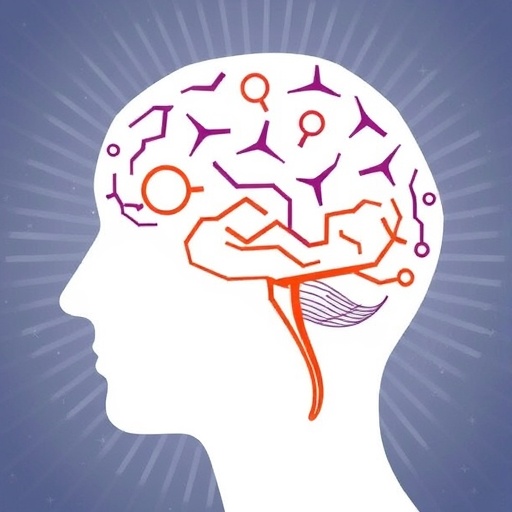A groundbreaking study published in BMC Psychiatry unveils the powerful capabilities of machine learning in predicting depression risk by pinpointing critical familial, personal, and dietary factors. This innovative research harnesses sophisticated algorithms to tackle the intricate pathology of depression, offering clinicians an advanced tool to identify individuals vulnerable to this debilitating mental health condition well before its onset. The urgency for such predictive models is underscored by the complex, multifactorial etiology of depression that has long eluded straightforward diagnostic markers.
Depression’s pathogenesis is notoriously multifaceted, involving an interplay of genetic, environmental, physiological, and lifestyle components. Traditional risk assessments often fall short in integrating these diverse variables comprehensively, limiting early intervention strategies. Addressing this challenge, the study incorporated data from 7,108 participants drawn from the United States National Health and Nutrition Examination Survey (NHANES), providing a rich, nationally representative dataset on health, nutrition, and psychological status. Leveraging this extensive data allowed for a thorough examination of potential predictors embedded in clinical and lifestyle parameters.
A critical aspect of this research involved the rigorous application of eleven distinct machine learning techniques, including state-of-the-art models such as CatBoost, Light Gradient Boosting Machine (LightGBM), and eXtreme Gradient Boosting (XGBoost). Traditional classifiers like Logistic Regression and Support Vector Machine were also employed for benchmarking purposes. This comprehensive model comparison facilitated an in-depth performance evaluation, with metrics including Receiver Operating Characteristic (ROC) curves, calibration plots, and decision curve analyses to ensure robustness and clinical applicability.
Among the array of models tested, the Random Forest algorithm emerged as the most superior in predictive accuracy. Its ability to capture nonlinear interactions among variables and handle multidimensional feature spaces contributed to near-perfect area under curve (AUC) values on training data, with moderate yet promising performance on unseen testing datasets. Closely following Random Forest in effectiveness were penalized regression models such as Lasso and advanced gradient boosting frameworks like XGBoost and LightGBM, highlighting their utility in mental health risk stratification.
Feature importance interpretation was carried out using Shapley Additive exPlanations (SHAP), a sophisticated technique that elucidates the individual contribution of each predictor to the model’s output. This method transcends black-box limitations by offering transparent explanations of how specific attributes influence depression risk, both on a population level and within unique individual profiles. Such interpretability is vital for clinical trust and facilitates personalized mental health care interventions.
The study identified eight key determinants that consistently influenced depression prediction across top-performing models. These encompassed anthropometric measures like Body Mass Index (BMI), socioeconomic indicators such as education level and annual family income, and psychosocial factors including marital status and the family income-to-poverty ratio. Notably, sleep disturbances, operationalized as trouble sleeping, emerged as a strong predictor, reinforcing the well-documented bidirectional relationship between sleep quality and mood disorders.
Dietary patterns also played a significant role, with the Composite Dietary Antioxidant Index and Dietary Inflammatory Index serving as novel predictors. These indices quantify dietary antioxidant intake and pro-inflammatory consumption, respectively, illuminating the intricate connections between nutrition, systemic inflammation, and mental health. The integration of these nutritional dimensions into predictive models represents a frontier in understanding depression etiology beyond genetic and psychosocial frameworks.
The final comprehensive model synthesized these eight predictors into a clinically accessible tool with promising predictive performance. By melding multifactorial risk elements encompassing biological, socioeconomic, and lifestyle domains, this model exemplifies precision psychiatry’s emerging paradigm. Its potential application spans early risk screening in primary care to informing tailored preventive strategies, thereby potentially reducing the burden of depression on individuals and healthcare systems.
While the findings of this research are compelling, the study acknowledges inherent limitations related to cross-sectional study design and reliance on self-reported data, which may introduce biases. Moreover, external validation in diverse populations and incorporation of longitudinal trajectories are warranted for enhancing model generalizability and temporal predictive power. Future work may explore integrating genetic biomarkers and neuroimaging data to refine and personalize depression risk models further.
This pioneering investigation marks a significant leap forward in mental health analytics by demonstrating how machine learning, paired with multifaceted clinical data, can unravel complex depression risk patterns. The elucidation of dietary antioxidants and inflammatory factors as actionable risk components opens new preventive and therapeutic vistas. Clinicians and researchers alike are poised to benefit from such integrative predictive frameworks that herald a new era in early detection and management of depression.
Clinically, these results underscore the necessity of a holistic approach in evaluating depression risk, moving beyond symptom-based assessments toward multidimensional profiling. Interdisciplinary collaborations bridging psychiatry, nutrition, data science, and public health are essential to translate these insights into practical screening tools and intervention programs. Embracing technology-enhanced predictive modeling could revolutionize mental healthcare delivery and outcomes in the years ahead.
As the global burden of depression continues to escalate, fueled by complex societal and biological determinants, the advent of such advanced machine learning models provides a beacon of hope. By enabling timely identification of at-risk individuals, clinicians can pivot toward preventive measures, mitigating the personal and societal toll exacted by depression. The confluence of data science innovation and psychiatric expertise illustrated in this study represents a promising frontier in combating one of the world’s most pervasive mental health challenges.
This comprehensive research not only highlights the potential of machine learning in psychiatric epidemiology but also serves as a clarion call for integrating accessible clinical and nutritional markers into predictive medicine. Ultimately, the fusion of computational intelligence with domain-specific knowledge heralds a transformative approach to mental health risk assessment and intervention, fueling hope for improved patient trajectories and public health resilience.
Subject of Research:
Article Title: Predicting depression risk with machine learning models: identifying familial, personal, and dietary determinants
Article References: Dong, Y., Wen, H., Lu, C. et al. Predicting depression risk with machine learning models: identifying familial, personal, and dietary determinants. BMC Psychiatry 25, 883 (2025). https://doi.org/10.1186/s12888-025-07182-8
Image Credits: AI Generated
DOI: https://doi.org/10.1186/s12888-025-07182-8




